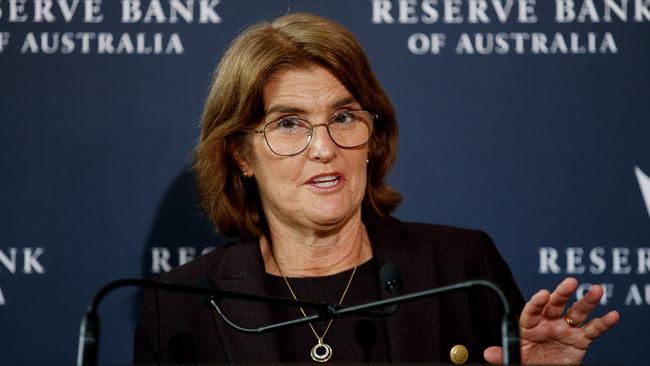Lesser of two evils may cause RBA to raise rates
On Wednesday the ABS releases the second quarter inflation data and if as expected it comes in at a stalled 4 per cent then it will be difficult for the Reserve Bank to ignore.

Sometimes central banking just comes down to a choice between the lesser of two evils.
While there is much going on offshore at present, there is also a lot for investors to consider locally. Indeed, Australian financial markets are at an interesting juncture at present.
In fixed income, the market is pricing in a 20 per cent chance of a 25 basis point interest rate rise at the RBA’s next meeting.
In equities, the ASX200 made a record high earlier this month but has since struggled to stay above the 8000 level. And in currency markets, the AUD/USD came close to hitting the US68c level earlier this month but has fallen quickly back towards the US65c level as concerns about the Chinese economy weigh on the currency.
Turning to the economy, economic data in Australia has been mixed. On the positive side, retail sales were better than expected in May, the economy added 50,000 jobs in June and measures of capacity utilisation in the labour market continue to reflect a tight labour market.
But forward indicators of labour demand, such as SEEK job ads and the forward orders component of the most recent NAB Business Survey, softened further in June.
Further weakening from here would likely give the RBA greater confidence that the required adjustment between aggregate demand and aggregate supply is under way.
Housing finance softened in May, as did the NAB Business Survey’s measure of business conditions in June.
On Wednesday, the Australian Bureau of Statistics will release the second quarter inflation data. Economists appear to be gravitating towards expecting a 1 per cent quarterly increase for the core measure, which would leave the annual rate of core inflation at 4 per cent. If realised, it would be hard for the RBA to ignore the fact that disinflation in the core measure has stalled around the 4 per cent level.
The RBA board next meets on Tuesday August 6. It will face a tricky set of circumstances to navigate.
On the one hand, it is possible the economy continues to slow, facilitating the required adjustment in aggregate demand and helping inflation to fall back into the target band. In this instance, the board would see no need for further tightening, viewing the stickiness in core inflation as temporary. On the other hand, it is possible core inflation is genuinely stuck at 4 per cent, meaning the board risks an episode of persistently elevated inflation and rising inflation expectations if it does nothing.
There is one further consideration. The RBA governor Michele Bullock has been clear in her assertion that the board has a low tolerance for a later return to target for inflation. This is another way of saying it has a little tolerance for higher-than-expected inflation outcomes. Based on the RBA’s last published set of forecasts, it is forecasting a 0.8 per cent rise in core inflation in the second quarter. So, if economists’ forecast of a 1 per cent rise in core inflation is correct, then CPI will be coming in stronger than the RBA expected.

How should central banks think about what to do in this situation?
One approach is to consider what might be the policy of least regret. The policy of least regret asks a central banker to consider the consequences in the event their policy choice turns out to be wrong. According to this approach, central bankers should be more comfortable with selecting the policy choice that, if erroneous in hindsight, will deliver the least bad outcome.
For the RBA, one possible error is leaving rates constant, believing the economy is slowing, but to subsequently realise core inflation is sticky at 4 per cent and inflation expectations are rising.
The alternative policy error is to raise rates in response to concerns about higher inflation, but to force a deeper – and with the benefit of hindsight – unnecessary slowdown.
Which mistake would a central bank prefer to make? Probably the latter, because the remedy to this problem is a series of rate cuts and, possibly, some targeted fiscal stimulus. The economy should be able to recover relatively quickly with such support.
While much will rest on the inflation data due this week, prudent risk management suggests that investors would do well to prepare for the possibility that the RBA might be forced to make a difficult decision next Tuesday.
Sally Auld is the chief investment officer at JBWere.



To join the conversation, please log in. Don't have an account? Register
Join the conversation, you are commenting as Logout